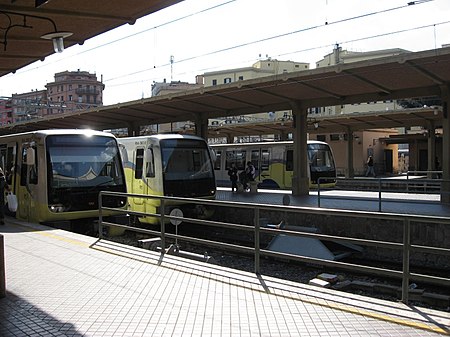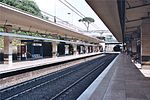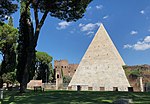Roma Porta San Paolo railway station
Railway stations in Italy opened in the 1920sRailway stations in RomeRailway stations opened in 1924Use mdy dates from November 2015

Roma Porta San Paolo is the terminal train station of the Rome–Lido railway line in Rome (Italy). The station is connected to the station Piramide of the metro (line B) and to the Roma Ostiense railway station of the Ferrovie dello Stato Italiane. It has six tracks. The edifice houses the ticket office and service structures, as well as a news-stand and a coffee shop. It also includes the Porta San Paolo Railway Museum.
Excerpt from the Wikipedia article Roma Porta San Paolo railway station (License: CC BY-SA 3.0, Authors, Images).Roma Porta San Paolo railway station
Piazzale Ostiense, Rome Municipio Roma I
Geographical coordinates (GPS) Address Nearby Places Show on map
Geographical coordinates (GPS)
| Latitude | Longitude |
|---|---|
| N 41.875968 ° | E 12.481767 ° |
Address
Piazzale Ostiense
Piazzale Ostiense
00154 Rome, Municipio Roma I
Lazio, Italy
Open on Google Maps











